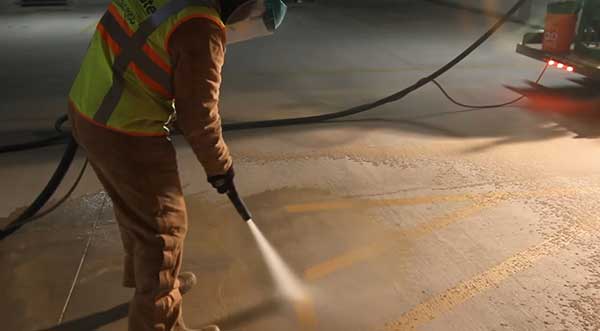Sandblasting Environmentally Friendly
Sandblasting Environmentally Friendly
What is Environmentally Friendly Sandblasting?
Environmentally friendly sandblasting is a process that uses abrasive materials such as crushed glass or recycled plastic instead of traditional blasting media such as silica sand. These materials are safer for the environment and can be more effective than traditional blasting media when removing harsh contaminants like rust and paint. Additionally, the dust created by these materials is much easier to clean up due to their larger particles.

Environmentally Friendly Sandblasting Types
The traditional sandblasting process can be hazardous to both workers and the environment. This is why many companies are turning to environmentally friendly sandblasting types that use less toxic alternatives for the same great results. Let’s look at some of the popular eco-friendly sandblasting types available today.
Media Blasting with Baking Soda or Corn Cob Grits
Most people don’t realize this, but baking soda and corn cob grits make great alternatives to traditional sandblasting media like silica or aluminum oxide. Not only do these materials produce fewer dust particles than their traditional counterparts, but they also leave behind fewer toxins in the air. Plus, they are non-flammable and non-toxic, which makes them ideal for indoor sandblasting jobs where ventilation might be an issue. The best part? Baking soda and corn cob grits are relatively inexpensive compared to traditional materials.
Dry Ice Blasting
Dry ice blasting is another environmentally friendly sandblasting that’s becoming increasingly popular among industrial applications. This method uses small pellets of dry ice (solid carbon dioxide) as its blasting media instead of toxic chemicals or abrasive materials like silica or aluminum oxide. The advantage of using dry ice is that it evaporates on contact eliminating any need for cleanup afterward—making it an excellent choice for delicate projects where precision is important. It’s also much quieter than traditional methods making it ideal for enclosed spaces or locations with sensitive equipment nearby. And because it’s non-abrasive and non-conductive, there’s no risk of damage to delicate surfaces like electrical components or painted surfaces!
There are plenty of ways to make your next sandblasting job more eco-friendly without sacrificing performance or quality results! Make sure to research all your options before deciding so you can find the right solution that meets your needs while still protecting the environment in the long run!
The Benefits of Eco-Friendly Sandblasting
Increased Efficiency
Another way an environmentally friendly sandblast can help save money is by increasing efficiency compared to traditional processes. This is because traditional methods require more time and labor, whereas eco-friendly processes are designed to be faster and more efficient. This means that jobs can be completed in less time and with fewer resources, resulting in lower overall costs.
Reduced Air Pollution
Traditional sandblasting methods release large amounts of dust into the air, which can cause air pollution. Eco-friendly sandblasting methods use less abrasive materials that are less prone to dispersing dust into the atmosphere. This helps reduce air pollution in your surrounding area and contributes to better overall health for everyone in your community.
Improved Working Conditions
Traditional sandblasting methods usually require workers to wear protective gear when working with hazardous materials such as silica dust and other toxins, which can be dangerous if inhaled or ingested. Environmentally friendly sandblasting processes use much safer materials for workers, so they don’t have to worry about breathing in harmful particles while they work.
Cost Savings
Eco-friendly sandblasting methods often require fewer supplies than traditional methods, so you can save money on supplies over time since you won’t need as much material as you would otherwise need with more traditional blasting methods. Additionally, eco-friendly blasting systems often require less energy since they don’t need as much compressed air, which can also help you save money on energy bills in the long run!
How to Reduce Dust During Sandblasting
Sandblasting is a reliable way to clean surfaces and remove rust, paint, and other debris. However, during the process, a lot of dust is created. This can cause health problems for workers and damage the surrounding environment. Fortunately, there are several ways you can reduce dust when sandblasting. Let’s look at some of them.
Vacuum-Assisted Sandblasting
One of the best ways to reduce dust from sandblasting is to use vacuum-assisted sandblasting equipment. This type of equipment includes a vacuum system that collects dust as it is created. Usually, these vacuums have a filter or bag that captures the dust before it can escape into the environment or affect workers. Vacuum-assisted sandblasting also helps speed up the process since the debris doesn’t have to be manually swept away after each blasting cycle.
Containment Booths
For larger projects where more sand needs to be blasted off, containment booths are an effective tool for controlling dust levels. These booths are designed with sealed walls and ceilings containing all the airborne particles released during sandblasting operations. They also have an exhaust system that will draw out any remaining particles and keep them from entering other workspace areas or outdoors.
Using Water Sprays
Water sprays alongside your blasting equipment are another great way to reduce dust levels during sandblasting operations. The water will collect most of the particles before they have a chance to become airborne, making it easier for workers to manage their exposure levels while they work on their projects without having to worry about breathing in too much dust.
By taking these steps, you can ensure that your workspace remains clean and safe for everyone involved in your project!
All in all, switching to an eco-friendly option for sandblasting is an easy way for businesses to cut costs and simultaneously protect the environment!
